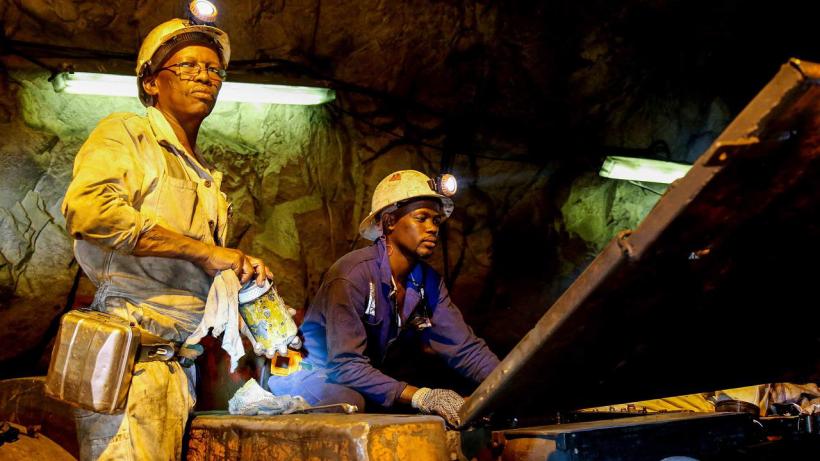
Climate Justice: Sharing the global climate responsibility
Climate change is now recognised as one of the most serious threats facing humanity and earth. The impact of climate change on livelihoods and communities undermines poverty reduction and the prospect of achieving sustainable development. As CO2 emissions from hundreds of years ago continue to contribute to the heating of the planet, the historical responsibility for climate change forms the core of the climate justice discourse.
In 1750, the combined GDP of Europe, Russia, US, Canada, and Japan – was a meagre US$ 35 billion (GDP estimates in this article are measured in 1960 US dollars). At the same time, the combined GDP of Asia (excluding Japan), Africa, and Latin America – was US$ 112 billion. In the subsequent 250 years, these statistics reversed significantly and by 1990, the GDP of the first group was US$ 4.3 trillion – up to two and half times that of the latter group. This momentous change was led by the fossil fuel-driven industrial revolution. Energy use in England and Wales increased by almost 700% between 1759 and 1859 – a rate seven times higher than that of the previous century, and colonialism, contributed significantly in strengthening the foundation for growth in today's advanced economies.
Fossil fuel-led growth and historical responsibility
By the year 2000, the world had increasingly realised that growth models based on fossil fuels were not sustainable. The preceding two centuries had seen industrial and economic growth wreak havoc on the earth’s ecosystems, bringing the world at crossroads between environmental catastrophe and fossil fuel-led growth. The most immediate solution to this problem is the gradual phasing out of fossil fuels. However, a major issue of contention here is that not all countries have used fossil fuels to the same extent. Countries who lagged behind and were preparing themselves to industrialise are now suddenly met with restrictions that were not there for the now already industrialised countries, who benefited from cheaper yet dirty sources of energy like coal, natural gas, and oil. For example, estimates suggest that the cumulative GHG emissions of US and the EU (UK included) from 1850 to 2012 contributed about 37.5% of all global temperature increases even though their population share is only 10.1%. This illustrates that richer and more industrialised countries have a more pronounced historical responsibility to take action against climate change.
Figure 1: Per capita CO2 emissions in 2019
 Note: Data from EDGAR. Yellow dots represent the growth rate of emissions. All estimates include international trade.
Note: Data from EDGAR. Yellow dots represent the growth rate of emissions. All estimates include international trade.
The argument for historic responsibility is rooted in the fact that more industrialised countries are not only responsible for most of the emissions to date, but they are also more capable and better placed to take action. This has given rise to the idea of common but differentiated responsibilities (CBDR). In essence, all states are responsible for addressing climate change but that responsibility should not be shared equally. CBDR sounds reasonable on paper but does not quite work in reality as richer countries continue to debate and evade historic responsibility, while the most vulnerable countries are left to fend themselves against a problem they did not contribute much to in the first place. As shown in figure 1, among the 10 most exposed and vulnerable countries, eight have CO2 emissions at or below 1.5 tons/capita/year, less than 10% of what an average US citizen consumes each year. The US however still debates whether or not climate change is humanmade and in so doing suffers political paralysis stymying any significant action. At the same time though, farmers in Bangladesh are already loosing arable land while women suffer from increased incidence of miscarriages.
Going forward, climate change action
What will be the next steps in this global battle? Recently a coalition of 24 like-minded developing countries urged richer nations to fully decarbonise by the end of this decade and “leave the remaining atmospheric space” for carbon emissions to the developing world. The rationale is that today’s industrialised economies have already contributed to environmental damage and should not continue to do so especially when a lot of the other countries are yet to achieve decent living standards, and using fossil fuels is the cheapest way to get there. However, in 2020, 79% of primary energy in the US was supplied by oil, coal, and gas. Ten years prior to that, the number was 83%. Such a small reduction in a decade illustrates the reality of climate justice. Climate vulnerable countries cannot rely on richer nations to make significant changes in terms of climate change mitigation. To add to this, promises made towards climate financing are yet to be fulfilled. In 2009, rich nations pledged to channel US$ 100billion each year to less-wealthy nations to fight climate change. While this was seen as an iconic gesture, Oxfam reports that only around 20% of that figure has materialised in recent years.
The story of climate change has been one of non-response from some of its largest contributors while some of the most vulnerable and smaller contributors are now leading climate action. Chile has set itself the target of reaching peak emissions by 2025; North Macedonia has committed to reducing GHG emissions by 82%; and Bangladesh has prepared the world’s first Climate Prosperity Plan and recently cancelled ten coal-based power plants, foregoing 12 billion dollars of foreign investment. The spirit of these countries and their plans to become increasingly climate resilient is indicative of the best practices in what has been an uphill battle against climate change.
Editor's note: This article is part of our climate change series exploring the challenges and opportunities of promoting a low-carbon, sustainable future in developing countries.

